Your Garden is Missing this Piece of Paradise
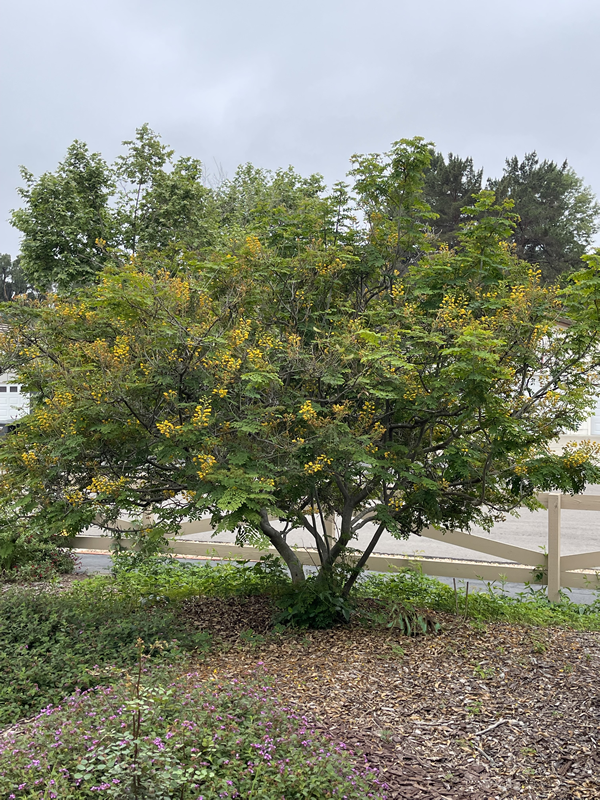
Caesalpinia mexicana makes for a beautiful addition to this native landscape garden.
By Leah Taylor (All photos by Leah Taylor)
(This article originally appeared in the January/February 2024 edition of California Garden)
Planting a tree from the diverse genus Caesalpinia can can be a rewarding and environmentally friendly choice in any garden. This California native plant goes by many names depending on the species and geographic area the name originated. Some common names include Poinciana, Mexican Bird of Paradise, Pride of Barbados, and Peacock Flower. All species offer a plethora of benefits that make it an excellent addition to any garden.
One of the most significant advantages of this plant is its exceptional drought tolerance, once mature. Caesalpinia can thrive in arid climates with minimal water requirements, making it a sustainable choice for regions prone to water scarcity or drought conditions. This plant thrives in hot climates and can with stand high temperatures, flourishing in extreme heat while its bipinnate leaves stay evergreen. It is well-suited for xeriscaping, a landscaping approach focused on conserving water. By incorporating this plant into your garden, you can create an attractive and eco-friendly landscape that conserves water resources.
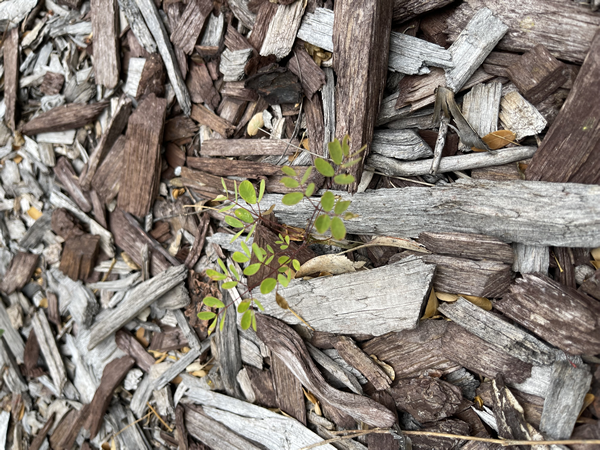
Seedlings of C. mexicana easily self-propagates in mulch and shallow soil.
This plant is relatively low maintenance once established. It requires and prefers very little pruning and is generally pest and disease resistant. Its adaptability to various soil types further simplifies garden upkeep. Its extensive root system can help prevent soil erosion, making it beneficial for gardens located on slopes or in areas prone to erosion. This feature contributes to the overall stability of the landscape.
Caesalpinia attracts various pollinators, including bees, butterflies, and hummingbirds, with its vibrant red, yellow, orange, or pink blooms. These pollinators play a crucial role in the ecosystem by promoting biodiversity and supporting other plants in the garden. One favorite visitor of Caesalpinia Mexicana is the California carpenter bee (Xylocopa californica), which visits blooms in spring and summer, and possibly into fall if weather permits. Coming from the legume family of plants, Caesalpinia’s fruit arrives in the form of seed pods which provide food for birds, making it an excellent planting choice for bird enthusiasts. Be warned though, after the seed pods are ripe, they open explosively and scatter seeds in a wide radius. The spent pod falls to the ground, creating its own mulch and putting it in the category of “messy plant.”
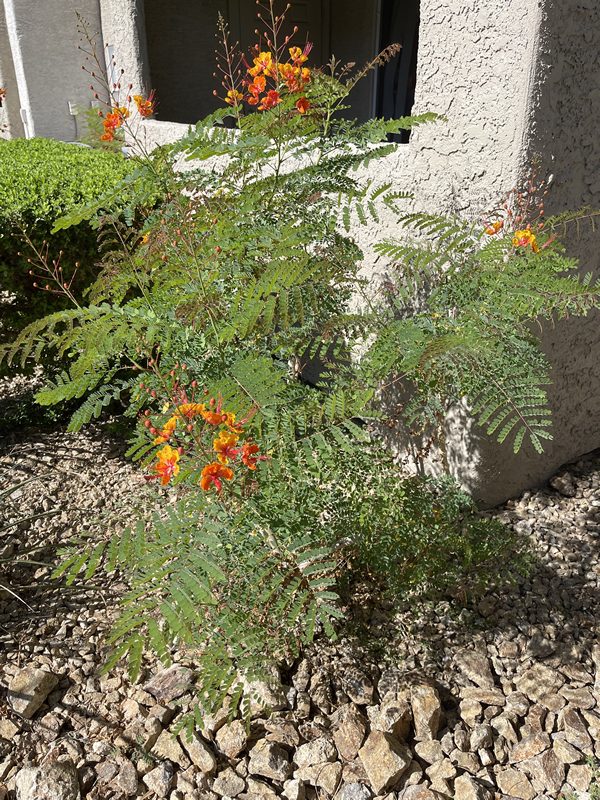
Caesalpinia pulcherrima, Pride of Barbados, is a great landscape tree with bright red-orange flowers.
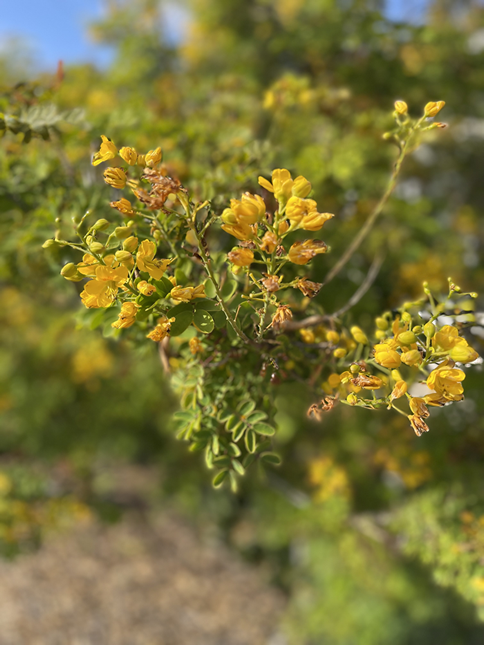
Yellow flowers of Caesalpinia mexicana bloom from late summer
through fall, a favorite of solitary bees.
Several different species of Caesalpiniaare commercially available, allowing gardeners to choose from a range of sizes and flower color to suit their specific design preferences. In general, each tree will rapidly reach a max height and width of 10 – 15 feet. Some species will display sharp thorns over the bark, similar to rose bushes, so inspect each plant carefully before purchasing and plant with adequate space to pass by safely.
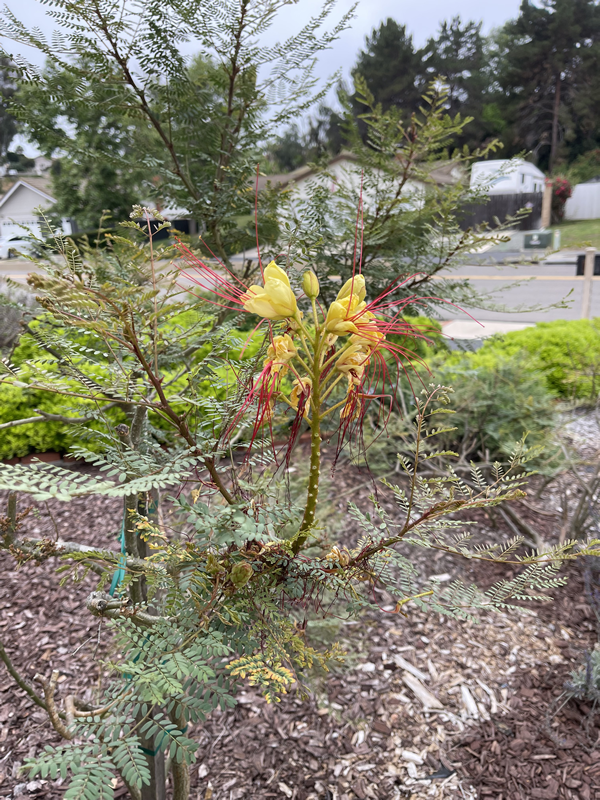
Caesalpinia gilliesii bloom has showy red stamens and large yellow petals.
In any garden in San Diego, Caesalpinia is a smart and environmentally responsible choice of tree. Its stunning appearance, low maintenance requirements, wildlife-friendly features, and adaptability to various conditions make it a valuable addition to any landscape. Whether you're looking to create a visually appealing garden, support local wildlife, or conserve water, this native plant offers numerous benefits that enhance the overall quality of your outdoor space. Consider adding any variety of Caesalpinia to your garden to enjoy these advantages while contributing to a sustainable and vibrant ecosystem.
Leah Taylor is the UC Master Gardener Program Coordinator.

